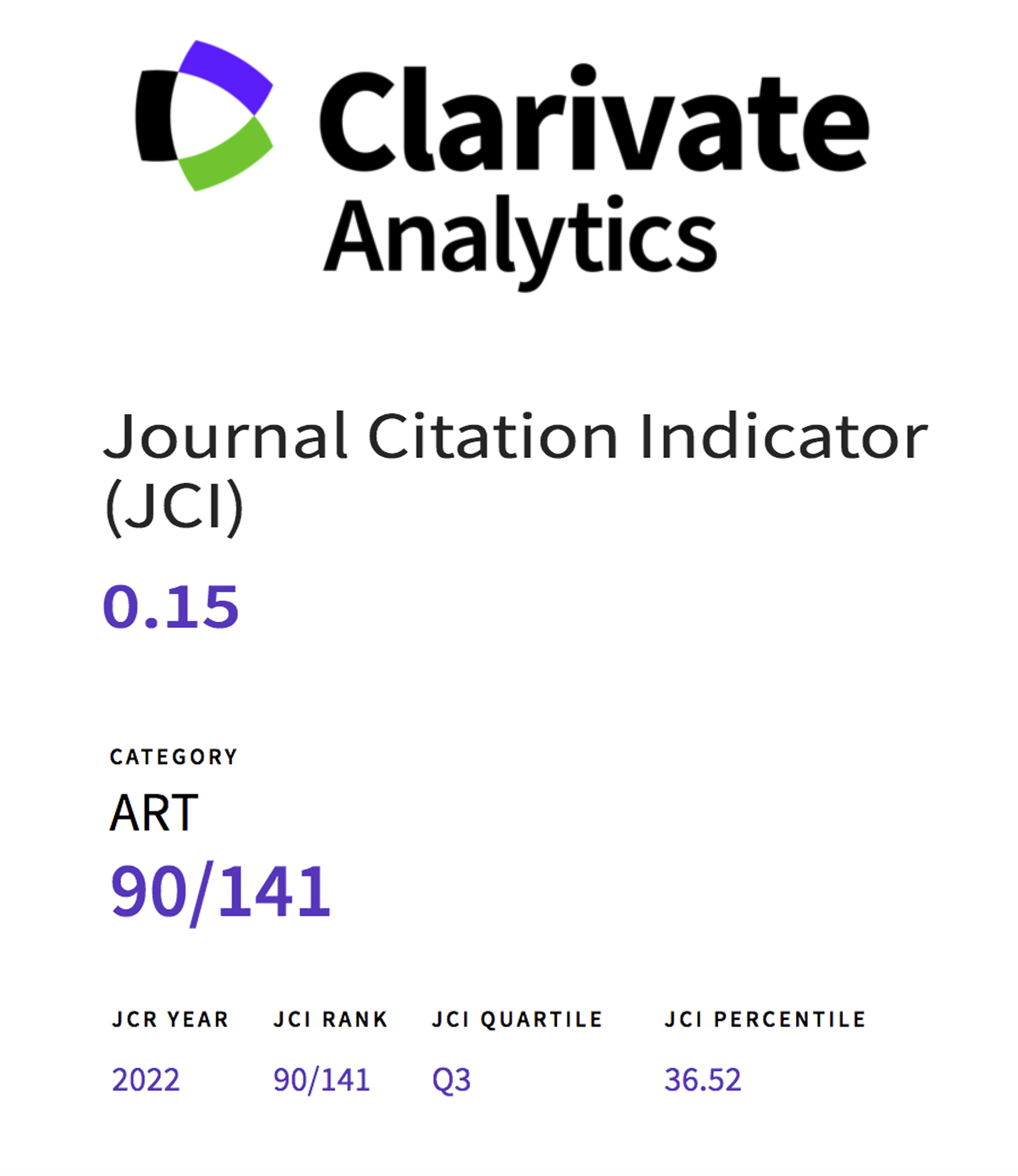Circular Beauty
An approach to sustainability aesthetics for the Capitalocen
Abstract
Aesthetics are not independent of the time in which they are located, nor of the ideology they support or answer; on the contrary, they can become a very important vector that facilitates changes in the worldview, as we have seen in the sociopolitical revolutions of the last century. Unlike the aesthetics of postmodernity, with their epidermic and scarcely critical condition, the times of the ecological crisis of the Capitalocene and of the transition to more sustainable societies demand a very different creativity and aesthetics (Albelda, Parreño y Marrero, 2018). This article defends the need to recover the identity and teleological role that art and aesthetics have played in the past. In this context, we will identify the foundational aspects of a circular aesthetic, and the indissoluble union with the ecological ethics from which it departs. Likewise, we will argue about the amplitude of the concept of circularity that, transcending the most known aspects linked to the recycling of materials, acquires an important moral function linked to the weak anthropocentrism, expressing the acceptance of individual fugacity, and even of culture and species, from a holistic perspective (Spier, 2011).
Downloads
References
Albelda, J., Parreño, J.M. y Sgaramella, Ch. (Eds.). (2019). Imaginar la transición hacia sociedades sostenibles. Valencia: UPV.
Albelda, J., Parreño, J.M. y Marrero, J.M. (Eds.). (2018). Humanidades ambientales. Pensamiento, arte y relatos para el Siglo de la Gran Prueba. Madrid: Los libros de la Catarata.
Albelda, J. (2018). Repensando el concepto de progreso. En J. Albelda, J. M. Parreño, y J. M. Marrero, (Eds.),
Humanidades Ambientales. Pensamiento, arte y relatos para el siglo de la gran prueba. Madrid: Los libros de la Catarata.
Albelda, J. y Sagaramella, Ch. (2015). Arte, empatía y sostenibilidad. Capacidad empática y conciencia ambiental en las prácticas contemporáneas de arte ecológico. Ecozona, 6, 10-25.
Arregui-Pradas, R. y Sánchez-Montañés B. (2014). La creación artística ante el paradigma ecológico. Arte y políticas de identidad. 10-11, 209-226.
Arribas, F. (2015). Arte, naturaleza y ecología. En T. Raquejo y J.M. Parreño (Eds.), Arte y ecología. Madrid: UNED.
Castro, C. de (2018). Gaia orgánica desde las ciencias de la tierra. Madrid: UAM (conferencia). Disponible en:
www.eloraculodegaia.info/.../pdf-presentaciones-de-carlos-de-castro-sobre-su-teoria-gaia-organica.
García, E. (1999). El trampolín fáustico. Ciencia, mito y poder en el desarrollo sostenible. Valencia: Tilde.
García, L. y Gutiérrez, V. (2014). Resiliencia tecnológica. Arte y políticas de identidad 10-11, 35-154.
Haraway, D. (2015). Anthropocene, Capitalocene, Plantatiocene, Chthulucene: Making Kin. Environmental humanities, 6, 159-165.
Riechmann, J. (2018a). Amontonar piedras. Reconstruir culturas, transformar identidades: sobre la necesidad de conversión socioecológica. En E. Santiago Muíño, Y. Herrero y J. Riechmann, Petróleo. Barcelona: Arcadia / MACBA.
(2018b). Una nueva estética para una edad solar. En J. Albelda, J.M. Marrero y J.M. Parreño. (Eds.). Humanidades ambientales: pensamiento, arte y relatos para el Siglo de la Gran Prueba. Madrid: La Catarata.
(2012). Interdependientes y ecodependientes. Ensayos desde la ética ecológica (y hacia ella). Barcelona: Proteus.
(2006). Biomímesis. Ensayos sobre imitación de la naturaleza, ecosocialismo y autocontención. Madrid: La Catarata.
(2005). Un mundo vulnerable. Ensayos sobre ecología, ética y tecnociencia. Madrid: La Catarata.
Riechmann, J., Almazán Gómez, A., Madorrán, C. y Santiago Muiño, E. (2018). Ecosocialismo descalzo Tentativas.
Barcelona: Icaria Antrazyt.
Spier, F. (2011). El lugar del hombre en el cosmos. La gran historia y el futuro de la humanidad. Barcelona: Crítica.
Tafalla, M.(2019). Ecoanimal. Una estética plurisensorial, ecologista y animalista. Madrid: Plaza & Valdés.
(2005). Por una estética de la naturaleza: la belleza natural como argumento ecologista. Isegoría, 32, 215-226.
Trainer, T. (2017). La vía de la simplicidad. Hacia un mundo sostenible y justo. Madrid: Trotta.
Worringer, W. (1908). Abstracción y naturaleza. México: Fondo de Cultura Económica.
Works published in this journal are subject to the following terms:
- The Service of Publications from the University of Murcia (publishing house) keeps the published works’ copyrights, and favors and allows the reuse of these works under the license indicated in point 2.
- Works are published in the journal’s online edition under the license Creative Commons Reconocimiento-NoComercial-SinObraDerivada 3.0 España(texto legal). They can be copied, used, disseminated, transmitted and publicly exhibited, as long as: i) the author and original source of publication are cited (journal, publishing house and work’s URL); ii) they are not used for commercial purposes; iii) the existence and specifications of this license are mentioned.
3. Conditions for auto-file. It is allowed and encouraged that authors share electronically their pre-print version (the pre-reviewed version) and /or post-print version (the reviewed and accepted version) of their Works before the publication, since it promotes its circulation and dissemination. RoMEO color: green.









